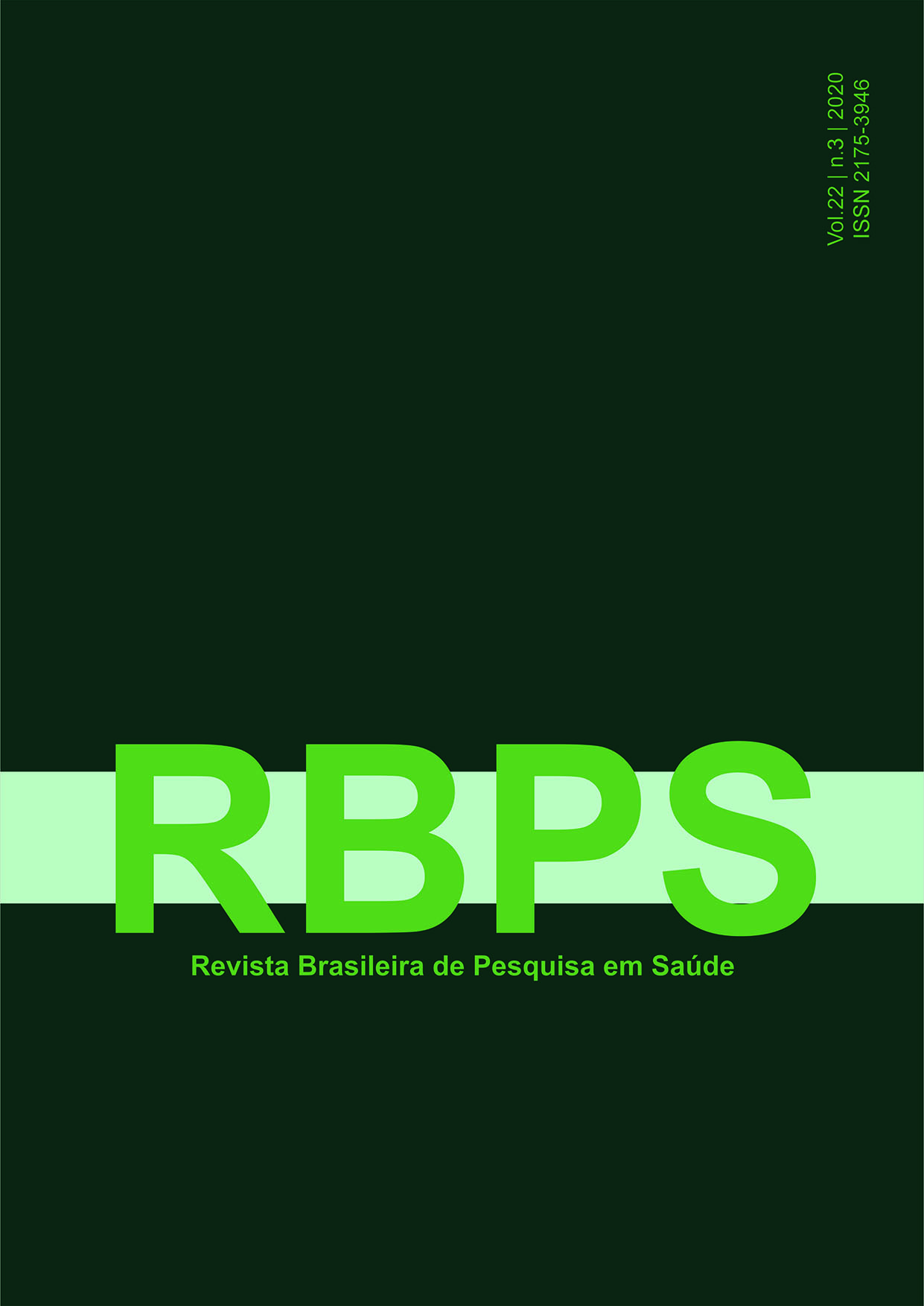Bach’s flowers and self-knowledge of nurse professor
DOI:
https://doi.org/10.47456/rbps.v22i3.19468Keywords:
Nursing professor, Flower Essences, ConsciousnessAbstract
Introduction: Teacher self-knowledge represents an important tool for the development of communicative ability applied in the relation between student and nursing educator in the praxis of the teaching process. In this sense, floral therapy can be used as a therapeutic resource to assist the teaching nurse in the search of his perceptive awareness and self-knowledge. Objectives: To identify the Bach System flowers that can help nursing educators in the search for self-knowledge and investigate in which aspects the use of this therapy can contribute to the improvement of the interpersonal relations of these individuals. Methods: A qualitative study, carried out at a Public University in the interior of the State of São Paulo/Brazil, with 15 nursing professors. Data collection took place during the period when the participants used the flower essences, through semi-structured interviews that were treated according to the Collective Subject Discourse. Results: Water violet, Oak, Elm, Chestnut bud, Walnut, Star of Bethelem and Honeysuckle were the most requested flower essences. The qualitative analysis identified four discourse anchors that demonstrated participants’ experience during floral therapy. Conclusion: Floral therapy was a therapeutic resource for teacher self-knowledge, triggering a perception of self and of collectivity.
Downloads
References
2. Sana MC. Work processes in Nursing. Rev bras enferm. [Internet] 2007; 60(2):221-4 [cited 2016 Nov 12]. Disponível: http://dx.doi.org/10.1590/S0034-71672007000200018
3. Sebold LF, Carraro TE. Ways of being nurse-teacher-teaching-nursing-care: a heideggerian look. Rev bras enferm. [Internet] 2013; 66(4): 550-6 [cited 2016 Jun 5]. Disponível: http://dx.doi.org/10.1590/S0034-71672013000400013
4. Piexak DR, Backes DS, Santos SSC. Cuidado de enfermagem para enfermeiros docentes na perspectiva da complexidade. Rev gaúcha enferm. [Internet] 2013; 34(2): 46-53 [citado em 2017 mai 15]. Disponível: http://dx.doi.org/10.1590/S1983-14472013000200006
5. Braga EM, Silva MJP. How communication experts express communicative competence. Interface (Botucatu). [Internet] 2010; 14(34):529-38 [cited 2016 Dec 12]. Disponível: http://dx.doi.org/10.1590/S1414-32832010005000005
6. Barnard J. Coletâneas de escritos de Edward Bach. São Paulo: Flower Remedy Programme, 2013.
7. Ministério da Saúde (BR). Política Nacional de Práticas Integrativas e Complementares no SUS [Internet]. Brasília: Ministério da Saúde, 2006. [acesso em 26 jan 2017]. Disponível em: http://bvsms.saude.gov.br/bvs/publicacoes/pnpic.pdf.
8. Ministério da Saúde (BR). Secretaria de Atenção à Saúde. Glossário temático: práticas integrativas e complementares em saúde [Internet]. Brasília: Ministério da Saúde, 2018 [acesso em 25 mar 2018]. Disponível em: http://portalarquivos2.saude.gov.br/images/pdf/2018/marco/12/glossario-tematico.pdf
9. Ministério da Saúde (BR). Resolução n.196/96 de 10 de outubro de 1996. Aprova as diretrizes e normas regulamentadoras de pesquisas envolvendo seres humanos [Internet]. Brasília, DF; 1996. [acesso em 26 jan 2017]. Disponível em: http://bvsms.saude.gov.br/bvs/saudelegis/cns/1996/res0196_10_10_1996.html.
10. Scheffer M. Terapia floral do Dr. Bach: teoria e prática. 14ª ed. São Paulo: Pensamento; 2015.
11. Scheffer M. Terapia floral original do Dr. Bach para autoajuda: o livro básico compacto. São Paulo: Pensamento; 2008.
12. Figueiredo MZA, Chiari BM, Goulart BNG. Discurso do Sujeito Coletivo: uma breve introdução à ferramenta de pesquisa qualiquantitativa. Distúrb comum. [Internet] 2013;25(1): 129-36. [citado em 2016 dez 2]. Disponível em: https://revistas.pucsp.br/index.php/dic/article/view/14931
13. Bach E. Os remédios florais do Dr. Bach. 19ª ed. São Paulo: Pensamento; 2014.
14. Kaminski P, Kattz R. Repertório das essências florais: um guia abrangente das essências florais norte-americanas e inglesas para o bem-estar emocional e espiritual. 3ª ed. São Paulo: Triom; 2003.
15. Botelho SH, Soratto MT. A terapia floral no controle do estresse do professor enfermeiro. Saúde em revista. [Internet] 2012;12(31):31-42 [citado em 2017 jan 23]. Disponível em: https://www.metodista.br/revistas/revistas-unimep/index.php/sr/article/view/1055
16. Yang WS, Koo M, Wang YH. The influence of Bach Rescue Remedy on the autonomic response to mental challenge in the healthy Taiwanese women. Intrag med res. [Internet] 2015;4(supl 1): 84. [cited 2016 May 30]. Disponível em: http://www.imr-journal.com/article/S2213-4220(15)00151-1/abstract.
17. Salles LF, Silva MJP. Efeitos das essências florais em indivíduos ansiosos. Acta paul enferm. [Internet] 2012; 25(2):238-42 [citado em 2015 abr 21]. Disponível em: http://www.scielo.br/pdf/ape/v25n2/a13v25n2.pdf
18. Daniel MAI, Soratto MT, Ceretta LB, Schwalm MT, Zimermann KCG, Dagostim VS. A terapia floral no controle do estresse ocupacional. Rev saúde com. [Internet] 2013; 9(1): 33-43 [citado em 2015 jul 23]. Disponível em: http://www.uesb.br/revista/rsc/ojs/index.php/rsc/article/view/286
19. Martín BCR. Esencias florales de Bach: efecto del White Chestnut sobre los pensamientos intrusos indeseados. Rev cuba invest biomed. [Internet] 2012; 31(2): 243-52 [cited 2014 Jan 17]. Disponível em: http://bvs.sld.cu/revistas/ibi/vol31_2_12/ibi10212.htm
20.Canever BP, Pardo ML, Gomes DC, Jesus BH. Consciência de mundo epistemológica de docentes da área da saúde. Rev gaúcha enferm. [Internet] 2016; 37(3):e53811 [citado em 2017 jan 29]. Disponível em: http://www.scielo.br/scielo.php?pid=S1983-14472016000300408&script=sci_abstract&tlng=pt
21. Braga MJG. Ser professor: um estudo sobre a constituição identitária profissional do enfermeiro docente. Cad educ. [Internet] 2013; 13(25): 98-117[citado em 2016 dez 3]. Disponível em: https://www.metodista.br/revistas/revistas-ims/index.php/cadernosdeeducacao/article/view/4962/4167
22. Mason S, Tovey P, Long AF. Evaluating complementary medicine: methodological challenges of radomised controlled trials. BJM. [Internet] 2002; 325: 832-4 [cited 2014 Dec 12]. DOI: http://dx.doi.org/10.1136/bmj.325.7368.832
23. D’Antonio P, Beeber L, Sills G, Naegle M. The future in the past: Hildegard Peplau and interpersonal relations in nursing. Nursing Inquiry. [Internet] 2014; 21(4): 311-7 [cited 2017 Feb 12]. Disponível em: https://www.ncbi.nlm.nih.gov/pubmed/24467803
24. Salles LF, Silva MJP. Enfermagem e as Práticas Complementares em Saúde. São Caetano do Sul (SP): Yendis, 2011.
25. Salles LF, Bel Homo RF, Silva MJP. The situation of teaching of holistic and complementary practices in undergraduate courses in nursing, physioterapy and medicine. Cogitare enferm. [Internet] 2014;19(4):741-6 [cited 2018 Mar 15]. Disponível: http://dx.doi.org/10.5380/ce.v19i4.35140
Downloads
Published
How to Cite
Issue
Section
License
Copyright (c) 2021 Revista Brasileira de Pesquisa em Saúde/Brazilian Journal of Health Research

This work is licensed under a Creative Commons Attribution-NonCommercial-NoDerivatives 4.0 International License.





